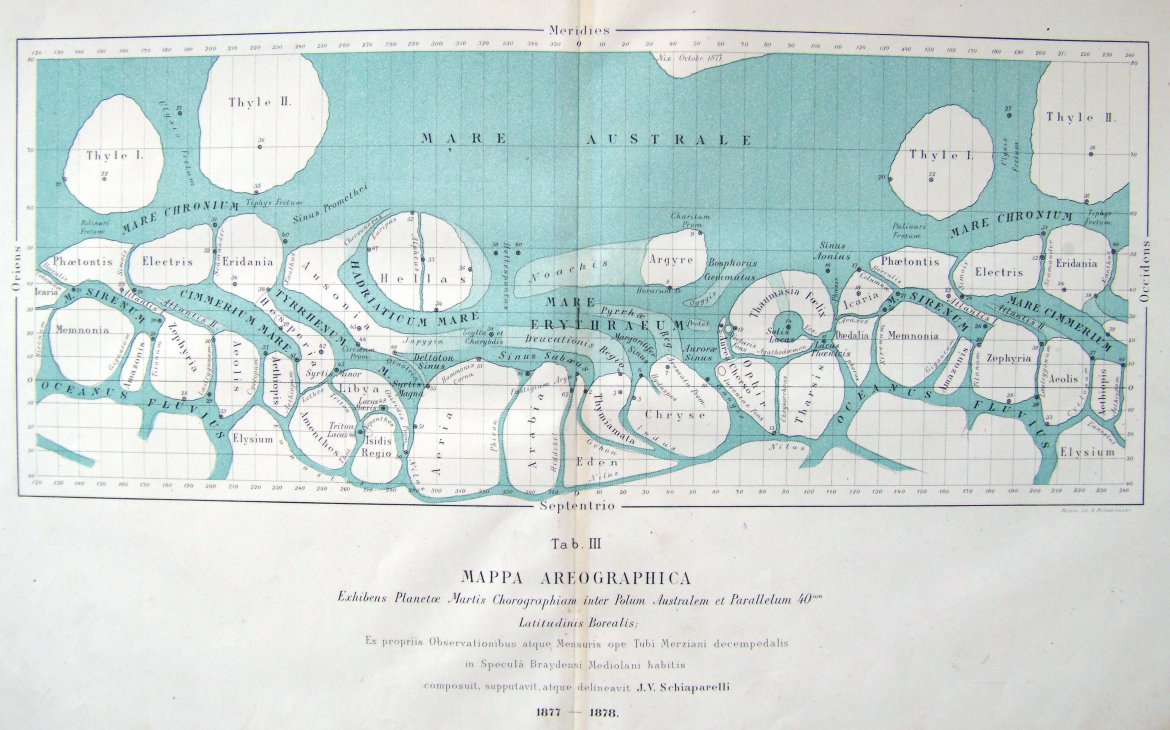
Schiaparelli is famous worldwide for his observations of the planet Mars, which had begun accidentally while he was trying out his new telescope at the Brera Astronomical Observatory (the telescope started operations in 1875).
When Mars is in opposition, that is, when the Earth is between the Sun and Mars, we are in the best possible conditions to observe the planet, because it’s visible all night and it appears bigger and more luminous.
Schiaparelli pointed the telescope at Mars for the first time during one of these favourable periods and immediately noticed many details that weren’t recorded on the maps available at the time. Consequently he started a systematic observing campaign, mostly at every opposition of Mars, about once every two years. Each set of observations resulted in a new map, each one more precise and detailed than the previous ones. These maps are considered the basis for areography, that is the geography of Mars.
But what exactly made Schiaparelli’s maps different from those previously used? This is not just due to the telescope, although it was more powerful than others, but also because of the new method Schiaparelli used to map the planet’s surface.
While other astronomers simply drew on paper what they saw through the eyepiece of the telescope, Schiaparelli used the same principles that were applied to cartography on Earth. He chose a feature to use as reference (in this case the direction of the axis around which the planet rotates and the southern polar cap). Then he selected several points distributed on the whole surface of Mars, associated with distinct features on the planet (craters, mountains, his famous “canals”). He measured their positions with the best possible accuracy and built a grid. Finally, he drew what he saw in each section of this grid, maintaining the respective proportion of the various features.
The final results were the wonderful maps of the red planet that were used to study Mars until the space missions could provide high quality photographs of the surface.
information based on Di pane e di stelle – Brera Astronomical Observatory
